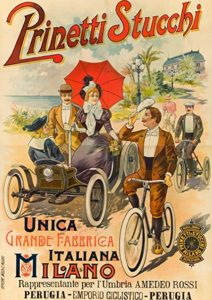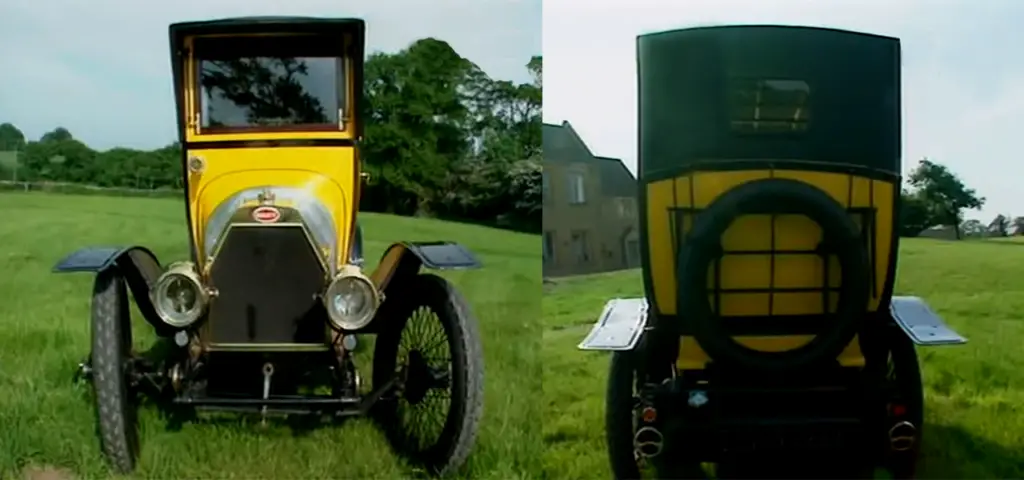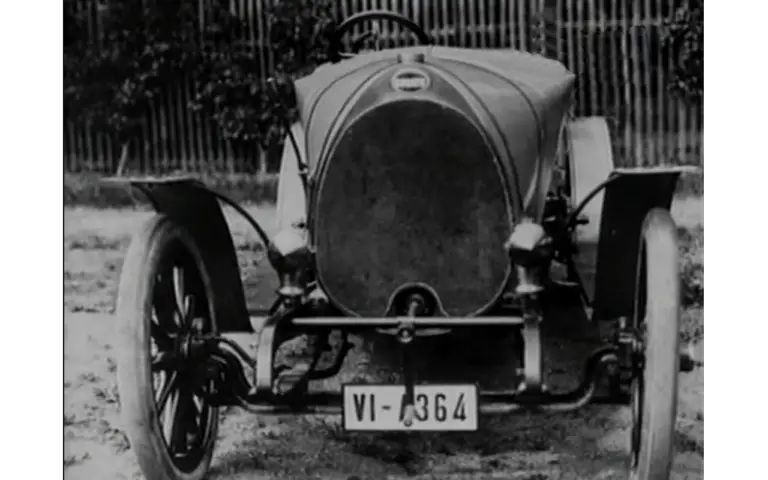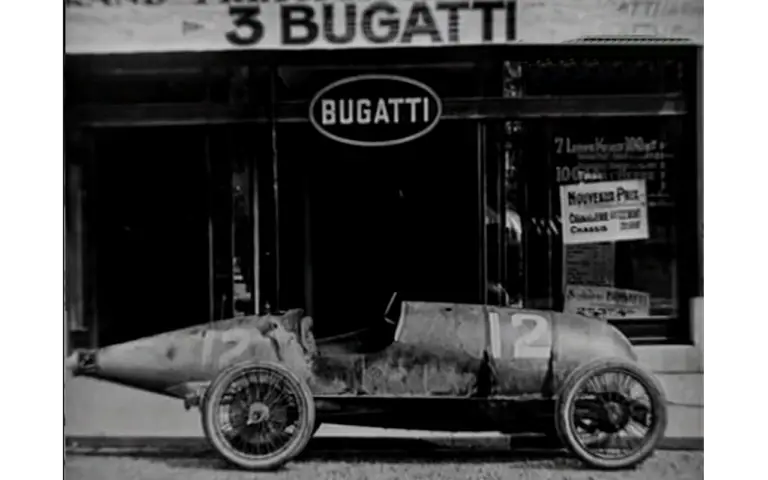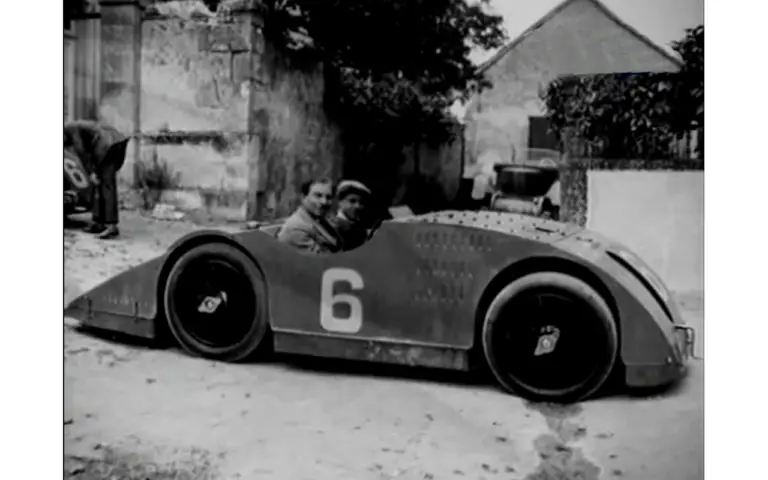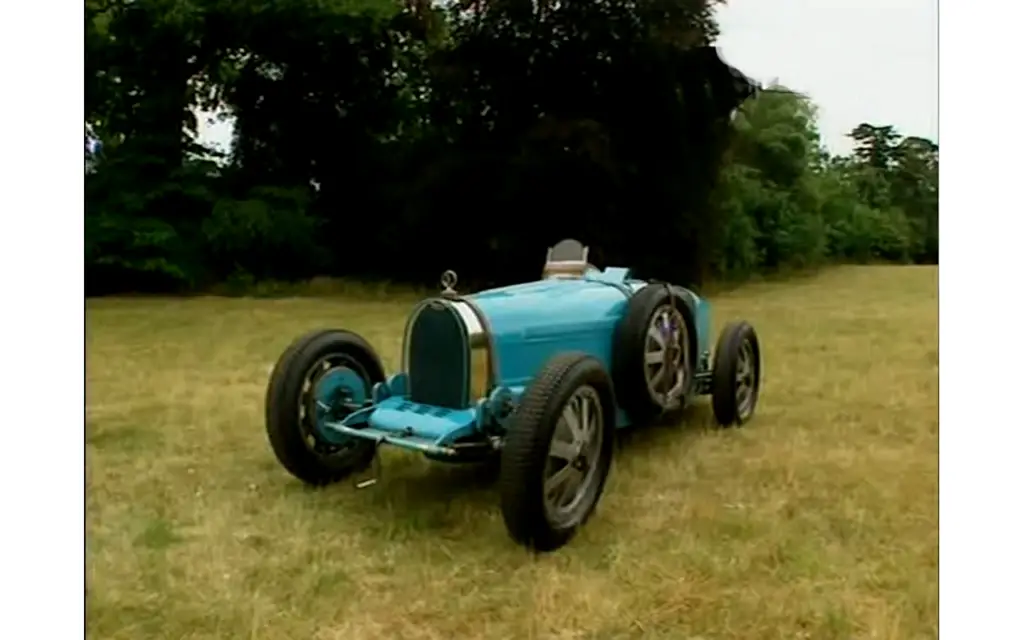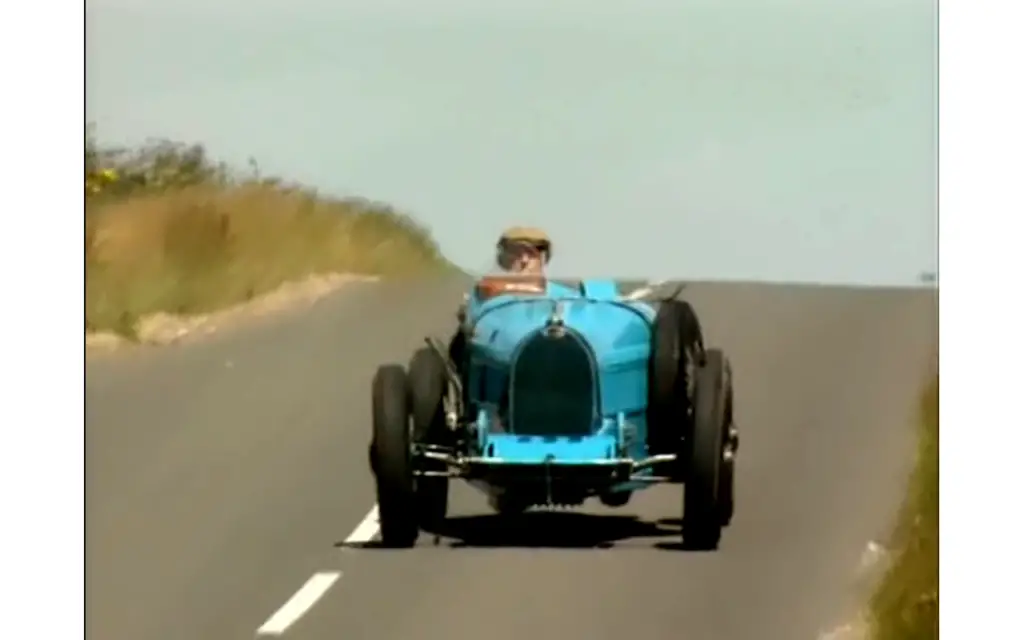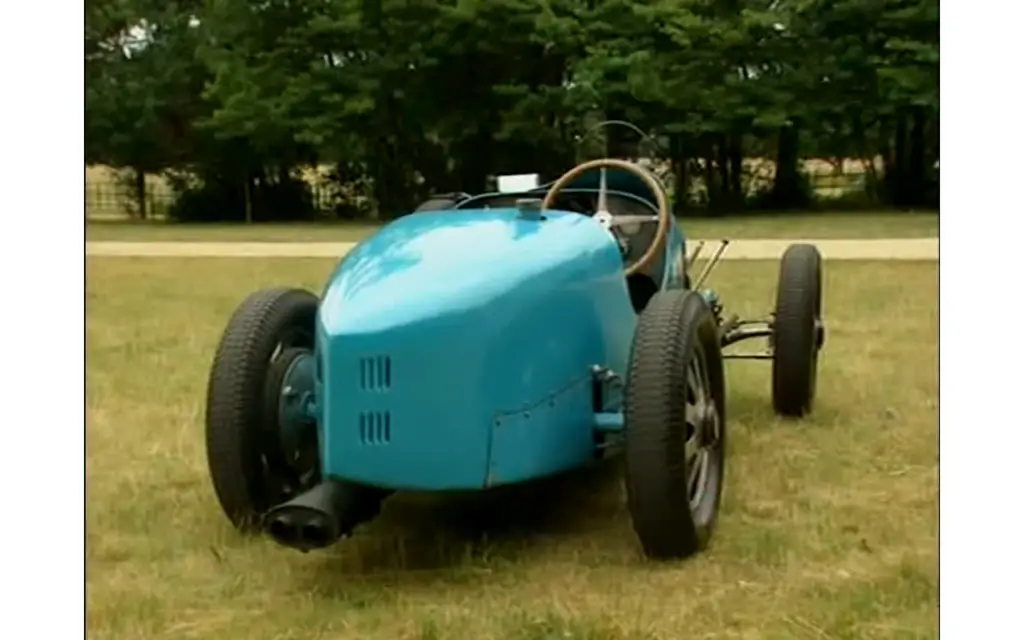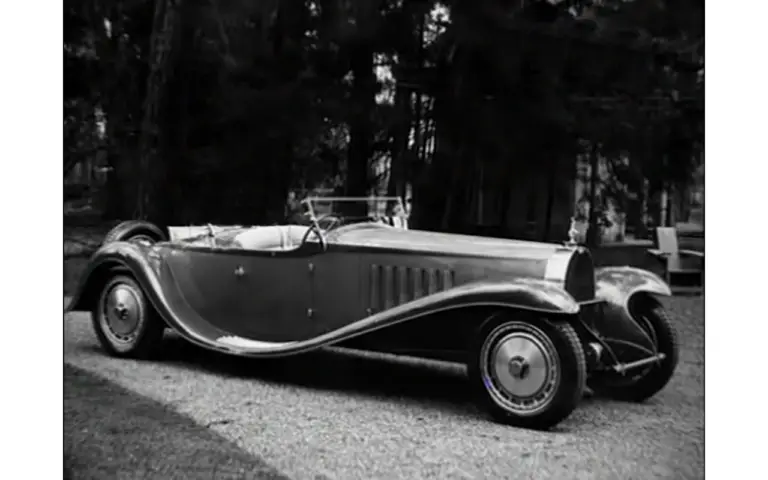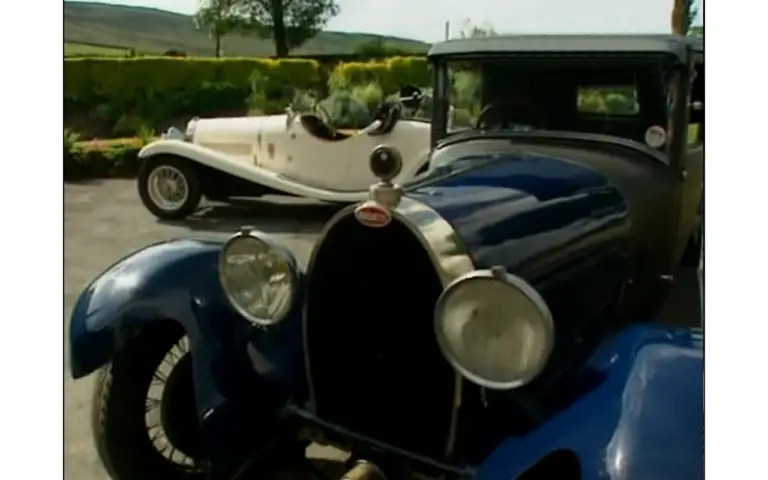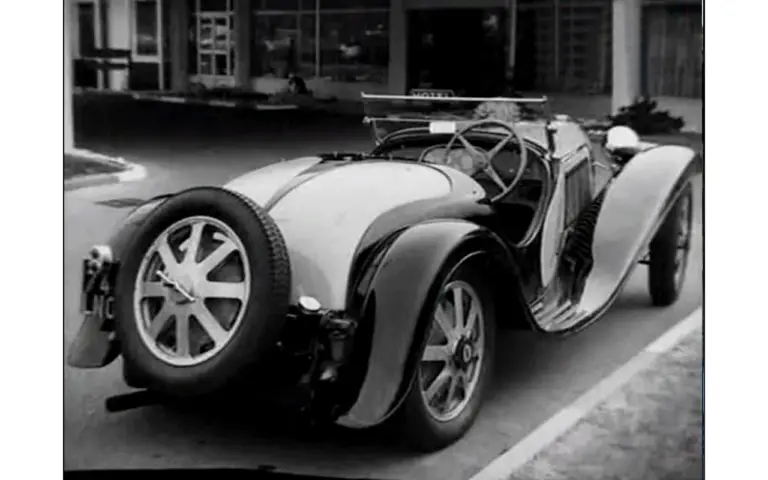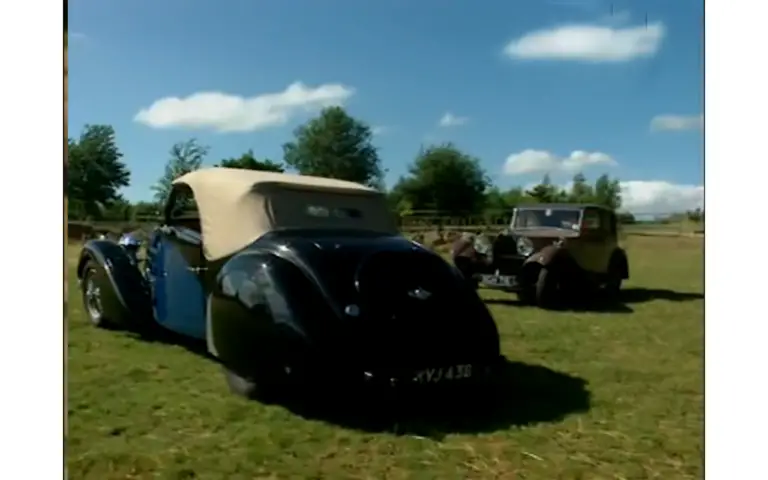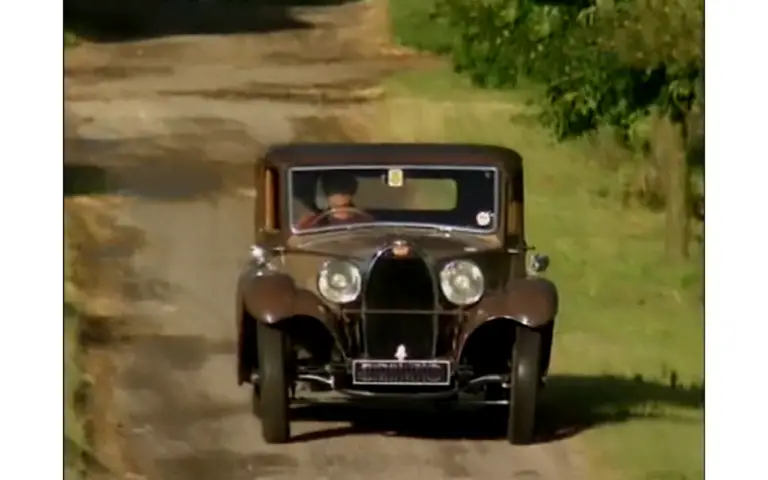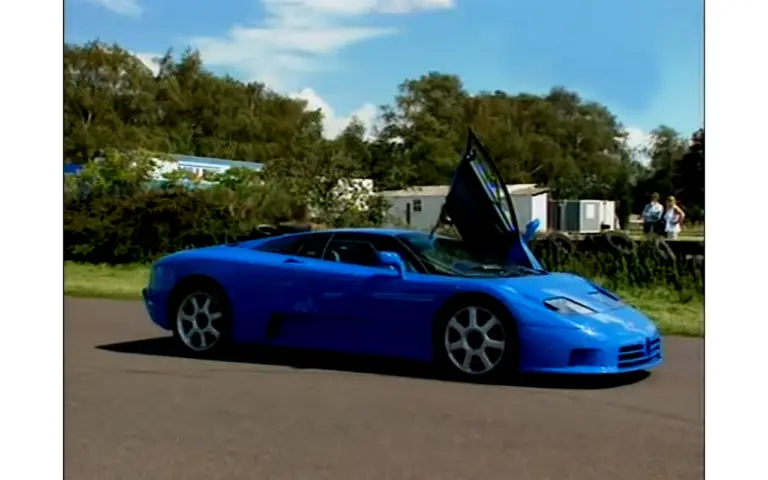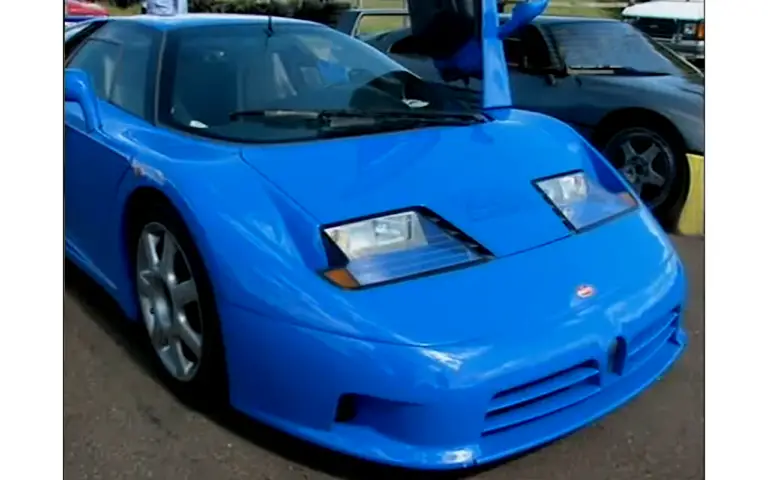
Documentary of Bugatti car
- It was a French automotive industry founded in 1909 by Ettore Bugatti.
- It was defunct in 1963 because it was sold to Hispano-Suiza.
- Its headquarters are in Alsace, France.
- Its key people are Ettore Bugatti & Jean Bugatti.
- Official website Bugatti.
Bugatti car brand logo design details we have the word got into my text and you it’s inside a red oval here with a Silver rim and on that RIM we have red dots again like I said about Bugatti being defunct in 1963. This is a wonderful effect feet car we call it the happy car well the gearbox is a little incontinent I’m afraid it’s a car doesn’t disturb nature it’s a great feeling being out of these pieces of antiquity it is just excellence.
Key to understanding Bugatti cars is to look at the background of the family Carlo Bugatti he was an artist he’s famous for silverware furniture most of the pieces have a strong form they might be egg shapes or cubes or spheres and then they’re decorated with fine detail so that the surfaces have a richness that was an absolutely vital part of design. Carlos design ideas seem to have repercussions that go down through the family.
He had two sons the first was a Tory the second was Rembrandt. Rembrandt from a very young age showed terrific talent in sculpture he was very prolific. Tory would have been imbued with the artistic atmosphere of the family but he may have been a little over faced with the obvious terrific talent of his brother and he became more interested in mechanisms and machinery.
Tory became a pioneer machine designer motorists racing driver he worked for Prinettie Stuccmi they produced racing tricycles and bicycles and so no in 1902 Ettore managed to arrange an amazing contract with 2nd tree to produce a series of cars he was particularly interested in the racing side of it and possibly he neglected the development of the touring cars in any event the de Dietrich’s fell out of Bugatti butt in 1909 he had the opportunity to set up on his own in Mall time in Alsace the prototype car was the type 10 which was a miniature high quality machine.
This is the Bugatti type 15 Chakra which was built in 1912 and 1910 the type 12 went into production the type 13 had a short wheelbase the Fiat car type 15 and the medium wheelbase which was very similar in its spirit and concept to that type 10 and it’s got an 8 valve engine 1.3 liter and we call it the happy girl it’s all we got to design this car having been so fascinated by post coaches and horse drawn carriages and I had a real passion for horses so I think you can see in picture it the whole design what’s special about this car is that it all began she built it obviously with the idea of manufacturing several of them what happened is that he built this one I am not aware of the second one and captured in the family.
Some people say that he designed this car also having in mind that his wife would go shopping in it I am not sure that’s true you can take it at any pace you want it will go up hills it’s got a lovely gearbox and you just fell very safe in it even though you might think because of the size of the wheels and the height of the coach that you did feel a bit wobbly going on country names but you are doing just feel cozy and protected in it.The reason why I am into the gases and such major roads I think for a start I did not have the choice the first thing I have known was being on the gas here at ease with my father and he did always take me everywhere with age four or five might be doing a rally with them which was complete bliss.
One of the happiest memories with this car was driving on the roads and Salsa France because the roads are quire steep and we
can’t exactly Hill Climb with this car but you get a good impression and in the middle of the summer with all the windows down you did just be in the middle of nowhere somewhere up in the hills and you did have huge yellow butterflies cruising through the car while you are driving which is quite surprising and you can just stop anywhere I go for one day and it’s a car which doesn’t
disturb nature because it looks like a huge yellow flower cruising around.
The First Bugatti is had a square angle children radiator but the first car with the famous egg-shaped Bugatti radiator was the 1910 Prince Henry trials car the motif of the radiator was of vital importance of the identity of any car manufacturer and those days after the war began was ready with a 16-valve version of the small 4 liter car and he entered a team of cars into the 1920 rhetoric race at the mall and one that really put Bugatti on the map.
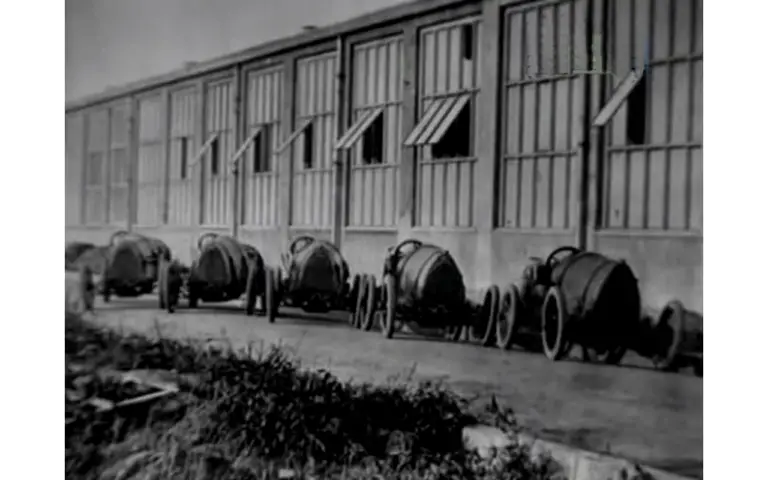
In 1921 the cars came in first second third and fourth at the race in Brescia in northern Italy for racing the car evolved through a series of body designs this famous cars knows as the Cigar with the circular section and the pointed tail with the exhaust coming out of the orifice at the end of the tail.
After this car was the type 32 the rank which had an airfoil section body it may have produced some aerodynamic lift and apparently was difficult to handle it.
In 1924 for French Grand Prix at Leon Bugatti produced his masterpiece it was the type 35. People think of as Grand Prix car like they think of this one Bugatti was an enthusiast as well as a an artist and I think he wanted to produce a work of art in the form of a Grand Prix car suddenly there was this car that was basically winning anything in its class it is just excellence it is the quality of manufacture that makes of you getting what he needs.
The blue is the French racing blue that has was used for many years the English have the racing green and the Germans have the silver but the French blue and we think this is the nearest we can get to the blue the French racing blue and most of the 35B’s that you see are in this blue color. Only 460 were built between 1924 & 1931.
French Grand Prix. Once sorted, It went on to win 1,851 races in the next 3 years including 12 major Grand Prix Races in 1926. This car is really fantastic to drive it’s very sharp it’s very quick off the mark you spin the rear wheels with it’s. It is a very light car the steering is very direct the gears you have to get used to but once you get used to them they are very quick through the gears and here is a little incontinent I am afraid yes and it does leave its mark but just have to fill it up you see and keep it to a level the other part which is difficult the pedals very close together and you have to wear very narrow shoes in order to operate them and going back to the oil if you are not careful if you get oil on the soles of your shoes it can become quite exciting when you go for the brake or the accelerator because these are a racing engine and you have to get the plugs settings to get your carburetor and you have got to get all the ancillary bits right and when you get it right there’s nothing.
In 1925 Bugatti entered the Targa Florio which was a car breaking race around the mountains of Sicily people thought that the delicate little car would not survive it was a long race very grueling unmade roads. In 1925 the type 35 won he won in 26 27 28 and 29 there were the golden years nothing could touch them the Yeti was fascinated by the idea of producing the ultimate car he designated it Royal the type 41 it was very large it was extremely refined silent 12 liters proportions almost of a London bus and he hoped and expected that it would be used by royalty and in the depression in the 30’s the French Government commissioned a project for rail cars Bugatti entered a design for this competition and was successful interestingly he found a use for the royal engine the 12 liter car engine which had been commercially anything but successful and the rail cars were produced in reasonably large numbers and they were very successful before the rail car Mull time was a small specialist car maker but in the 1930’s it became of not an industrial giant a large industrial company during this very intensive phase of development at Syme as well as the racing cars and the luxury cars they were the touring cars which Bugatti produced in larger numbers.
The type 44 was a superb example it was a 3 liters 8 cylinder beautiful machine. I did always dreamed of having a Bugatti the white one is Tula. Nash Frame that is just covered with fabric makes it very light weight with a two door this folks who pay because of the pram irons down the side of it.
In Bugatti terms the Type 44 car was a best seller 1,095 were made between 1927 & 1931 including tourers, cabriolets, saloons and numerous specials. The 3 liter engine was considered to be Bugatti’s most refine to date and the car could reach a top speed of over 75 mph. It was often referred to as “The Doctor’s Bugatti”.
Two across The continent in the 1930’s jean Bugatti was beginning to have more influence in the running of the factory a Malton hos father a Troy was spending more time in Paris Jean was very much involved with the Type 55 roadster which is perhaps the most beautiful sports car that’s ever been developed after Jean’s project was the Type 57.
This is 1934 57with a James Young sport saloon it was originally described as then now it’s surprising car it looks upright and stately and that’s rather slow but when you put your foot down it is got all the power and handling ability of a bugatti car.
And the blue one is slightly later 1936 it’s a type 57 still vo bodied by the factory at Mall time so its very much young Bugatti car. Around 740 were built between 1933 & 1940 . The 3,257 cc engine developed 130 bhp and a top speed of 95 mph which was said to “defy the decades”. In 1937 a rubber mounted engine was introduced and in 1938 hydraulic brakes were added.
IN 1939 the type 57 G tank version one LAmour after the race jean Bugatti was testing one of the cars near mock time and there was a fatal accident he was killed he had been such a key figure in the production and development and design at the factory that his death was really the writing on the wall Ettore Bugati continued his design work in Paris and after the war it was hoped that he would set up production again there were all sorts of projects from his drawing board but in the event little happened and really was the sad end.
In 1980s the trademark Bugatti was bought by an Italian consortium and they set up in Campo Galliano to Produce super sports cars unfortunately the whole project ran into financial difficulties and at the moment we don’t know this car will be produced in any numbers at all but for me really I think it comes to quite a nice clothes pre-war I feel these that the true Bugattis the all built well a tree was still alive.

